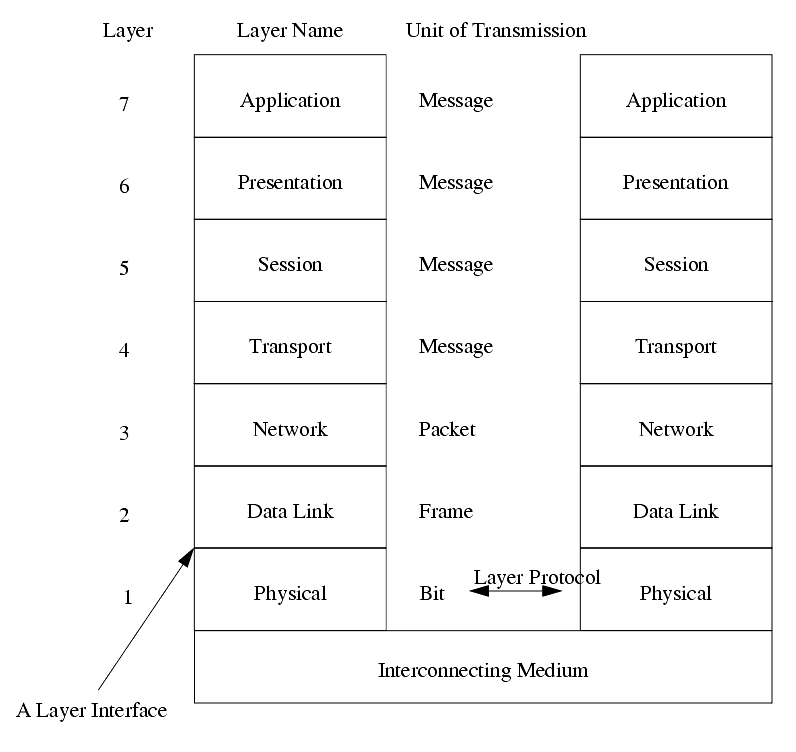9.1 OSI NETWORK MODEL
������������Several types: Ring, Star, Linear, Point-to-Point
Local Area Network (LAN), Wide Area Network (WAN)
9.1.1 Why Use A Network?
������������General OSI Diagram contains seven layers

9.1.1.1 - Physical Layer
������������Physical layer is concerned with transmission of raw bits over a physical circuit.
Deals with voltages, timing, connections, etc.
Responsible for bit synchronization and the identification of a signal element as either a 0 or a 1.
Protocols: RS-232, RS-449, CCITT X.25 and X.21, IEEE 802
9.1.1.2 - Data Link Layer
������������Data link layer breaks input data into "data frames" and processes acknowledgments.
Object is to provide a error-free transmission line to the network layer.
Responsible for the reliable delivery of information over a point-to-point or multipoint link.
Supervises interchange of both link control data and user information
Protocols: ANSI X3.28, HDLC, X.25, ISDN, IEEE 802
9.1.1.3 - Network Layer
������������Network layer determines the interface between the computer and the intermediate system, how packets are routed.
Chooses a route from the available data links that form the network.
Object is to take messages, convert them to packets and send them towards the destination.
Protocols: CCITT X.25, X.21, IP, CCITT Q.931, ISO 8473
9.1.1.4 - Transport Layer
������������Transport layer takes data from the session layer, splits it up if necessary, and passes this to the network layer.
Ensures that pieces all arrive correctly at the other end.
Isolates the user from any concern for the actual movement of the information.
9.1.1.5 - Session Layer
������������Session layer defines a connection between users (presentation layer processes).
Includes specification of the remote machine, authorization, options for the communication, and recovering from errors in broken transport connections.
The set-up of communications is called binding.
Protocols: ISO 8327, CCITT X.225, T.62, ECMA 75, NFS, RPC.
9.1.1.6 - Presentation Layer
������������Ensures compatible syntax among the communicating processes by adjusting data structures, formats, and codes.
Presentation layer is generally represented by library routines which the user accesses to perform network operations.
This layer can also perform transformations such as compression and encryption.
Protocols: DIS 8823, 8824, 8825, CCITT X.409, T.61
9.1.1.7 - Application Layer
������������Application layer is written by the user, or is a program that performs some function for the user.
Provides a window by which the user gains access to the communication services provided by the architecture.